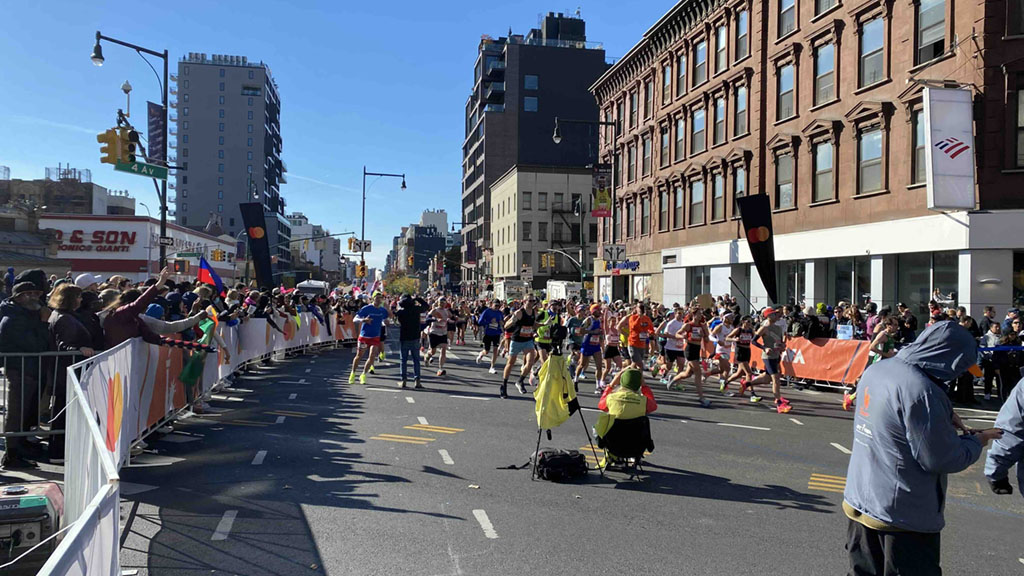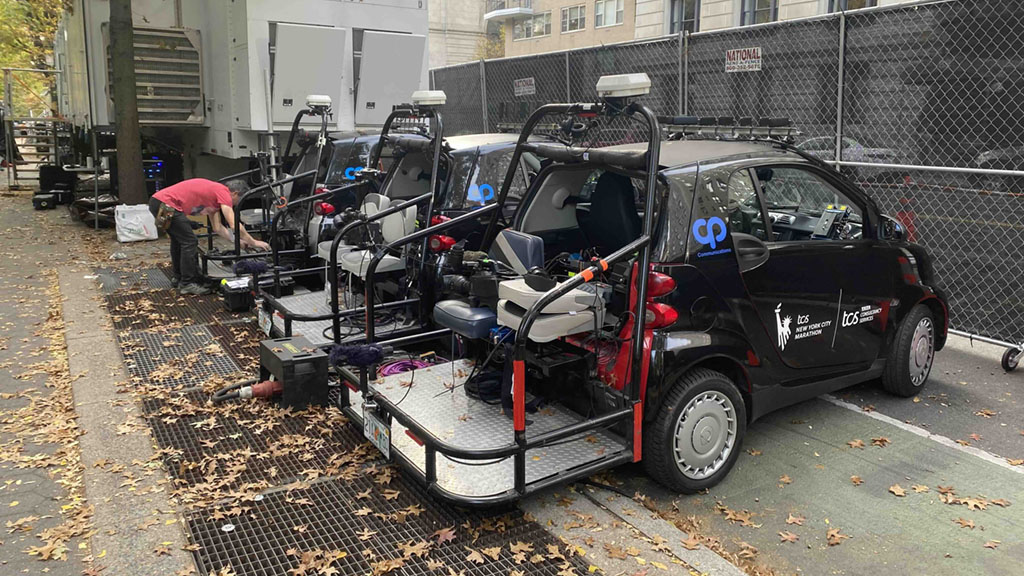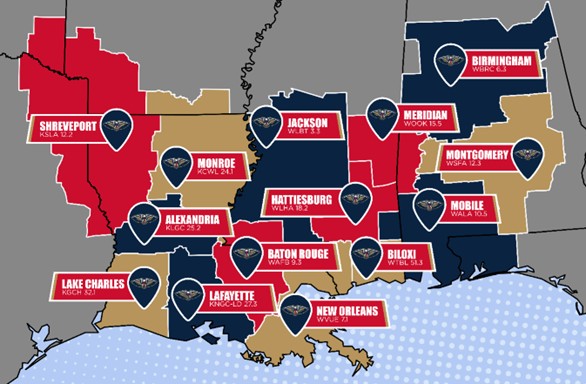CP Communications Taps New Tech To Cover NYC Marathon
Advances include first-ever IP-based aerial coverage, expansion of private wireless spectrum for improved reliability

NEW YORK—CP Communications and its Red House Streaming subsidiary marked their 11th year of covering the TCS New York City Marathon last month by adding new technology to fill in coverage gaps. For this year’s five-borough, 26.2-mile race on Nov. 3, these included a broader implementation of private LTE spectrum, streamlined REMI site systems and integration with Starlink that enabled IP-based aerial acquisition.
These content acquisition and networking innovations from RHS allowed CP technicians to expand the event’s streaming footprint to 48 outbound feeds originating from HD-21, CP’s flagship 53-foot expando production truck. Those feeds were sent to multiple broadcast and streaming platforms, including WABC-TV New York City, ESPN2, the New York City Marathon App, and event organizer New York Road Runners’ social-media platforms.
“Over the years, we have gradually taken control of production elements where we can make a difference,” CP Communications Technical Manager Frank Rafka said. “This year, we took full responsibility for the TSC New York City Marathon App consumer experience, producing and streaming nine live feeds. That’s a big change from last year where we handed off select camera feeds to a third party. We added two VMix systems to HD-21 and assigned a dedicated operator to each for live mixing and switching of all nine feeds. We also added a dedicated encoding channel to our on-board Haivision Makito X4 video systems for low-latency transmission, which ensured real-time delivery to the app.”
As in past years, the RHS team deployed REMI (remote integration model) production systems to three locations, slimming down the technologies to simplify setup and operation, the company said. Haivision Pro460 5G mobile video systems were among the encoding and decoding technologies used to contribute live feeds to HD-21 from the three REMI sites, leveraging both public mobile networks and special Citizens Broadband Radio Service (CBRS) spectrum. RHS also deployed Pro460 systems to seven on-course motos, including dual-stream Smartcars with Sony cameras and microphones to capture live POV feeds and commentary from on-course talent.

The CBRS spectrum proved especially useful for intercom communications, particularly at the starting and finish lines, where public mobile spectrum can quickly reach capacity. “We assigned a Green-GO digital intercom system to the CBRS spectrum, which provides a private LTE cellular network for mission-critical needs with networking and communications,” said Aaron Segarra, vice president of sales at CP Communications and Red House Streaming. “That ensured clear spectrum for intercom at the start and finish lines where you have large crowds of spectators sharing their own pictures and live video feeds.”
The Green-GO intercom network included 18 belt packs at the starting line and 12 at the finish line along with six iPhones at each site, with connectivity to a cloud server from Pente Networks to manage all technologies assigned to CBRS spectrum. The communications strategy included a city-wide Unity radio system for field technicians, moto drivers, bike spotters and press vehicles, and an RTS ADAM matrix with RVON connectivity between HD-21 and the three REMI sites.
CP Communications also partnered for the first time with Helicopters Inc. to provide a camera-equipped helo for aerial race coverage. CP and RHS technicians designed a platform in collaboration with Heli Inc. to mount a Starlink satellite antenna and use that service for connectivity and Haivision for encoding.
The professional video industry's #1 source for news, trends and product and tech information. Sign up below.
“That was a huge accomplishment in our quest for uninterrupted connectivity,” Rafka said. “We recently started using Starlink to embellish existing cellular coverage for sporting events as there are always spots with coverage caps, and others where we can’t establish a reliable internet drop or run a cable across the street. For the marathon, we equipped Starlink connectivity to a helicopter for the first time. We still had a traditional RF microwave link on the helicopter for backup, but we used Haivision encoders as our primary encoding links. For the first time, we provided uninterrupted coverage of the entire race from all locations via IP with sateliite-based Starlink connectivity.”
The marathon—now in its 54th year—is produced by FILM 45 on behalf of the New York Road Runners.
Tom has covered the broadcast technology market for the past 25 years, including three years handling member communications for the National Association of Broadcasters followed by a year as editor of Video Technology News and DTV Business executive newsletters for Phillips Publishing. In 1999 he launched digitalbroadcasting.com for internet B2B portal Verticalnet. He is also a charter member of the CTA's Academy of Digital TV Pioneers. Since 2001, he has been editor-in-chief of TV Tech (www.tvtech.com), the leading source of news and information on broadcast and related media technology and is a frequent contributor and moderator to the brand’s Tech Leadership events.

